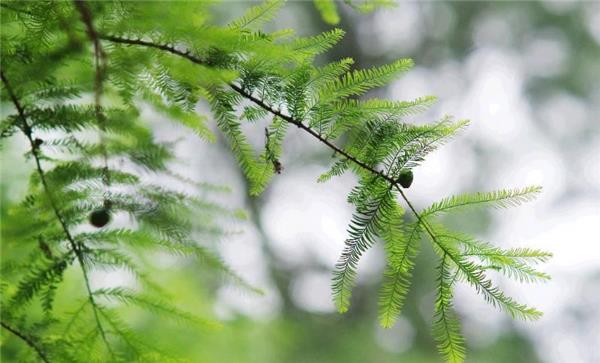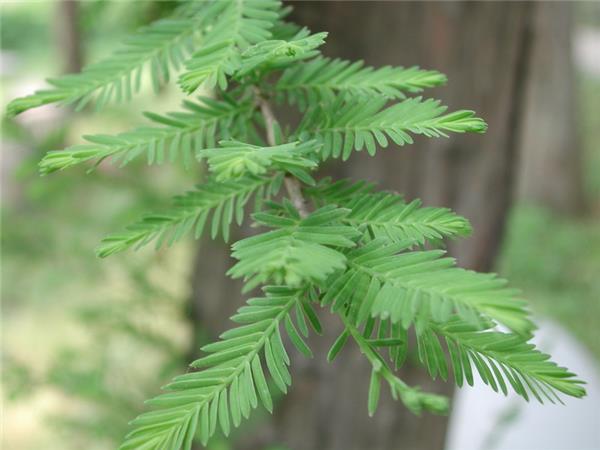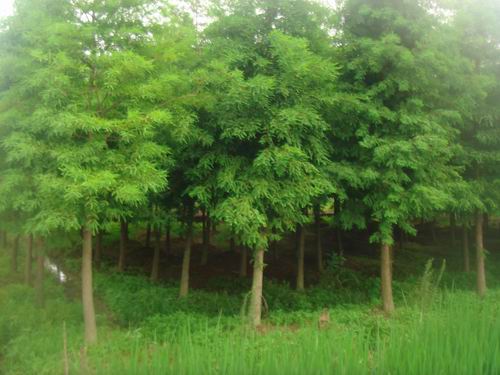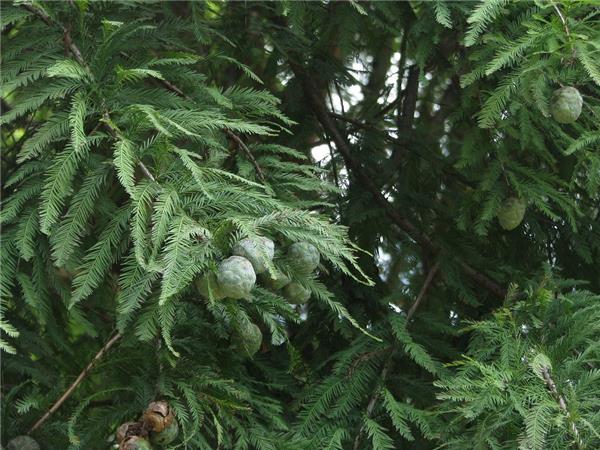Propagation mode of Cryptomeria fortunei and matters needing attention in transplanting
The growth of Cunninghamia lanceolata is not much different from other seedlings and is not very delicate, so it is very easy to breed, but in the process of transplanting, we still have to pay attention to its root protection, let's learn more about it.

I. introduction of Cryptomeria fortunei
Morphological features: also known as Chi Bai. Taxodiaceae, deciduous trees of the genus Taxodium. The base of the trunk is inflated, usually with curved knee-shaped respiratory roots. Bark thick, brown, furrowed, strips flaky. Large branches obliquely extended, branchlets erect, reddish brown. The leaves are subulate, slightly curved inward, 0.5 ~ 1.0 cm long, protruding, close to the branchlets, spirally arranged on the branchlets, and some of the leaves on the young or sprouting branches are linear. Male cones are arranged in panicles, while female cones are solitary at the top of new branches. Cones elliptic, light brown, 1.8 × 3 cm in diameter. Seed scales peltate, woody, seeds reddish brown, trigonous, thickly winged on ridges. The florescence is April.
The cones mature in October. The cultivated varieties are Cryptomeria fortunei (Taxodium pinnatifida), the lower leaves are linear and pinnate, and the branches are many, and the branchlets are slender and drooping in 2012.
Growth habits: like light, not resistant to shade. It is resistant to water and moisture and has certain drought resistance. Young trees and seedlings grow rapidly in deep, loose and moist acidic soil, and young trees and seedlings are very sensitive to soil acidity and alkalinity. It has strong sprouting ability and strong wind resistance, so it can be used as afforestation tree species of farmland shelterbelt.

Second, the reproduction mode of Cryptomeria fortunei
Sowing and reproduction: the seeds have a hard shell, difficult to absorb water and contain inhibitory substances, so they germinate slowly and last for a long time, sometimes more than 80 days. For example, sowing in spring does not emerge until summer, which seriously affects the growth of seedlings and seedlings. Therefore, the seeds should be collected in autumn and winter, and after treatment, wet sand stratification should be carried out in December, and the seeds should be sown 90 days later. When sowing, choose fertile, moist slightly acidic sandy loam to do bed strip sowing. The row spacing is 20 cm, and the sowing rate is 8 to 10 kg per mu. According to the routine management after sowing, the annual seedlings can be planted out of the nursery when the annual seedlings are as high as 60 to 80 centimeters.
Cuttage propagation: collect light brown, fully developed semi-woody branches of the same year 10 to 15 m long in summer and autumn, treat them with 50 mg / L naphthalene acetic acid for 6 hours, or soak them with other rooting hormones for 3 seconds, then insert them into fine river sand that is fully washed and sterilized, seal and shade with thin film to strengthen water management. The height of the seedlings of the same year can reach about 50 centimeters in summer, and can take root in the same year in autumn, then transplant in the next spring and continue to cultivate. Hardwood cuttings can be cut with fully lignified branches in spring to grow cuttings of 10 to 12 centimeters, treated with 100 to 150 mg / L naphthalene acetic acid for 24 hours, and inserted in loam seedbeds with 3.5 to 50,000 plants per mu to strengthen management. the seedlings can be planted in the nursery as high as 50 to 60 square meters in the autumn of that year.

3. Matters needing attention in transplanting Cryptomeria fortunei
1. In the transplanting of Cryptomeria fortunei, we must pay attention to the protection of his bark, which is related to his survival, so it is very important. Once the earth ball is excavated, hoisting is very important to the bark damage, and different trees are different according to the actual situation and the characteristics of the trunk itself, so the lifting methods are also different, such as hanging the earth ball, hanging the tree trunk, or hanging the tree fork, etc., among which the soil ball is the most commonly used in lifting, and it is also the best way to protect the bark.
two。 Collision between car body and tree trunk, tree trunk and tree trunk should be avoided in the process of loading and transportation. After loading the tree, because the tree itself is large, in order to avoid contact between the trunk and the car body, a soft cushion should be used between the trunk and the car body.
3. In the process of unloading and planting, the method adopted is basically the same as that of digging and hoisting. However, it is often encountered that the hanging earth ball can be used when loading, but not when unloading, so it is necessary to use the above tree trunk and bifurcation method.

Planting Cunninghamia lanceolata in the courtyard can not only greatly improve the quality of the courtyard, but also make the courtyard look lush and create a natural scenery.
Related
- Wuhan Hospital Iron Tree Blooming Result Was Instantly Frightened by the Gardener Master
- Which variety of camellia is the most fragrant and best? Which one do you like best?
- What is the small blue coat, the breeding methods and matters needing attention of the succulent plant
- Dormancy time and maintenance management of succulent plants during dormancy
- Minas succulent how to raise, Minas succulent plant pictures
- What are the varieties of winter succulent plants
- How to raise succulent plants in twelve rolls? let's take a look at some experience of breeding twelve rolls.
- Attention should be paid to water control for succulent plants during dormant period (winter and summer)
- Watering experience of twelve rolls of succulent plants
- Techniques for fertilizing succulent plants. An article will let you know how to fertilize succulent plants.



